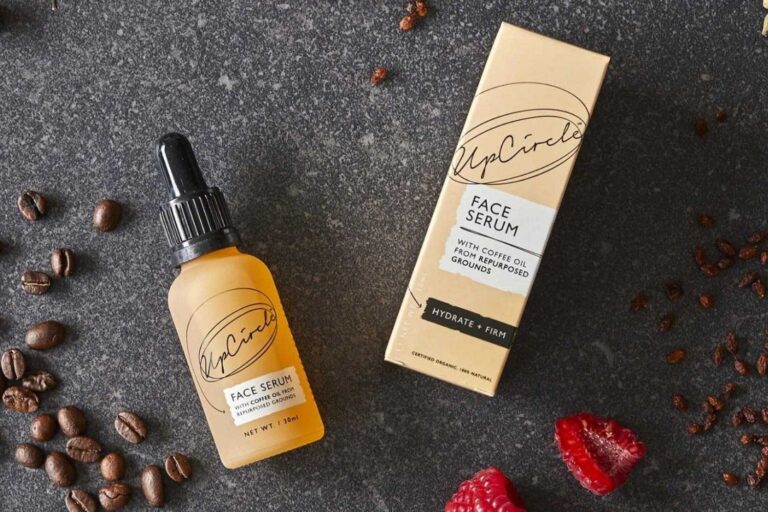Skincare for all
It doesn’t matter your age or how you identify, looking after your skin is something most of us do.
Whether using a facial scrub, moisturiser or hand cream most of us use some form of skincare and according to Mintel, the global skin care products market size was estimated at USD 130.50 billion in 2021 and is expected to reach USD 135.83 billion in 2022.
With that sort of scale, skincare comes with an environmental footprint and this week we look and why that is, the steps you can take to lower your impact and as ever we look at some sustainable products and share a fantastic discount.
Skincare's through the ages
Skincare has a long history that dates back to the Egyptians.
They experimented with blending animal fat with olive oil or other plant-based oils to make it spread more easily after discovering early on that animal fat eased inflamed skin.
The flawless, unlined skin that comes from avoiding the sun was adored by the ancient Romans.
The wealthy applied pricey Arabian oils to their faces, which helped to prevent wrinkles.
The poor in these times used vinegar-mixed plaster, clay, chalk, bacon rinds, and even animal fat.
The first cold cream was developed by Aelius Galenus a Greek doctor in the Roman empire (129 CE-216 CE) who mixed water, beeswax and olive oil to create the first cold cream, but later versions also used a mix of almond oil, rose petal extract and beeswax.
In France, cold cream is still known as Cérat de Galien (Galen’s Wax).
The availability of affordable skincare exploded in the 1900s as sunscreen was invented in 1944 and Carmex was created in 1937.
In New York City, Estee Lauder debuted their cosmetics brand in 1946 and Clearasil, Ponds, Oil of Olay, and Clinique soon followed in the 1950s.
With the increase in popularity and use, the impact of the skincare industry on the planet has increased hugely!

Skincare and its impact on the planet
Skincare comes with lots of impacts on the planet – too many to list here, but we have focused on some of the main issues to give you an idea of the problems.
The packaging used in the beauty sector is less functional and more decorative and packaging waste generated by the cosmetics industry accounts for around 70% of all its waste.
Lipstick, shampoo, and body wash are discarded after being used up and as there is very little which can be recycled, much of it ends up in landfill and oceans.
Currently, oceans accumulate 8 million tonnes of plastic annually.
One of the most common substances used in modern cosmetics is palm oil, which, due to its enormous demand has led to intensive cultivation of palm oil which has become unsustainable.
Huge tracts of natural forests have been cleared to make room for palm oil plantations, and innumerable animal species have lost their habitat in the process.

Another skincare issue is that the most common ingredient in cosmetics is water.
Despite being a natural and secure element, the supply is running out from a sustainability perspective.
By 2050, 52% of the world’s population will reside in areas with limited water resources, according to the UN.
The weight of a product as a result of using water as a filler is also another problem as water is heavier than most oils and when added to cosmetics it increases transportation emissions.
The final issue we looked at is the fact that eventually, every cosmetic you apply washes off and eventually ends up in our oceans.
Shampoos, sunscreens, creams, and lotions frequently include dangerous chemicals that harm the environment.
The main offenders, which have been identified as endocrine disruptors and connected to cancer, are parabens and triclosan.
These chemicals also affect aquatic life and are especially harmful to coral reefs!
What to look for in sustainable skincare
So what can you do as a conscious consumer to make better choices that will help lower your footprint and your impact on the planet?
Here are a few tips and as ever, we look at some sustainable skincare alternatives.
When it comes to packaging, look for products without plastic or unnecessary cardboard or other types of packing materials.
Refillable is always a good way to go and a lot of sustainable brands are now doing a subscription service with refills for packaging you keep – much better for the planet.
You should also look for products that have not been tested on animals and are certified cruelty free.
Finally, products made from natural ingredients that have been sourced sustainably are far, far better than ones containing chemicals which are harmful to the planet and the life on it.
Three sustainable skincare brands we love
There are some great sustainable skincare brands out there and Play It Green has done some research, so you don’t have to and here, in no particular order are our top three sustainable skin care brands.
The first brand we looked at was BYBI.
BYBI employs raw materials and only 100% natural, vegan, and cruelty-free substances in products devoted to enhancing the health of your skin.
It has also committed to becoming a net zero carbon brand by the end of this year and hosts the BYBI Susty Summit, an event that covers a wide variety of sustainable-related topics.
Well love BYBI’s Beauty Babe Balm which is packed with shea butter, calendula and hibiscus oil.
They serve to soften, protect and soothe skin.
It can be used on lips, hands, cuticles, knees, elbows, heels and any other rough patches.
Our second great and sustainable skincare brand is SBTRCT – and we aren’t quite sure how to say that, but they too are committed to giving you great skincare without impacting the planet!
Palm oil free, vegan and housed in 100% domestically compostable packaging, SBTRCT has also made a conscious effort to reduce the water content that goes into its products.
SBTRCT’s fabulous Gentle Foaming Cleanser is made with vegetable-derived emollients, coconut-based surfactants and a beautiful blend of geranium, rose and tonka essential oil making it gentle on your skin and the planet.

Our final skincare brand is Upcircle.
Since its inception, UpCircle has vowed that none of its products will ever include SLS, SLES, palm oil, silicones, parabens, mineral oil, perfume, or sulphates.
Additionally, it is ocean-friendly, uses recycled materials (thus the name), and has 100% recyclable packaging.
Their organic face serum made with discarded coffee oil has won numerous awards and is also a favourite on Instagram with some fabulous reviews.
To help our readers take their next step to a more sustainable future, you can head over to the Upcycle website and use the code WELCOME15 to receive a 15% discount on all products!
That’s it for this week. We hope you found the article interesting and informative and please do try out the products we recommend, you never know it may lead to a permanent reduction in your footprint!












